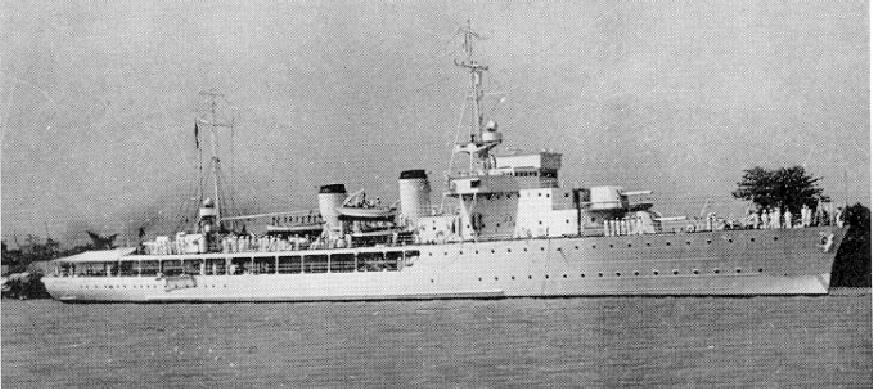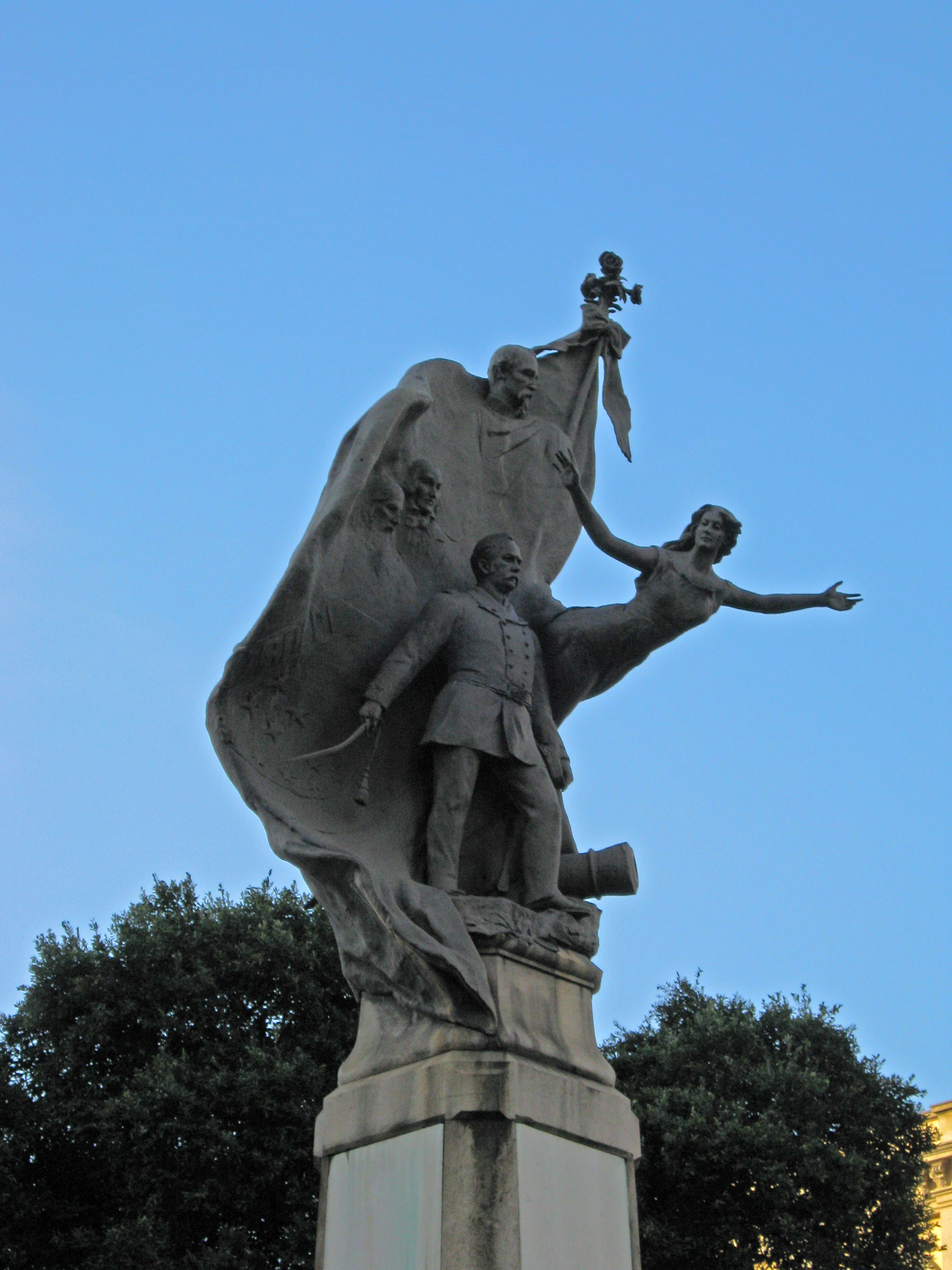|
Isaías De Noronha
José Isaías de Noronha (6 June 1873 – 29 January 1963) was a Brazilian Navy Admiral who briefly served as president of Brazil while being a member of the provisional military junta of 1930. Born into a military family, Noronha took up a naval career. He served aboard ships such as ''Andrada'' and ''Recife'' and commanded ships such as ''Piauí'', ''Sergipe'', and ''Minas Geraes''. In 1930, he became one of the three members of the military junta which ruled Brazil between October and November 1930. When the junta acquiesced to revolutionaries, Noronha initially remained as minister of the Navy in the administration of President Getúlio Vargas. He was also president of the before and after the junta. Early life and career Early and personal life José Isaías de Noronha was born in Rio de Janeiro on 6 June 1873 to Zulmira Augusta Aguiar Noronha and lieutenant general Manuel Muniz de Noronha. His uncle, Admiral Júlio César de Noronha, was the minister of the Navy bet ... [...More Info...] [...Related Items...] OR: [Wikipedia] [Google] [Baidu] |
Brazilian Military Junta Of 1930
The Brazilian military junta of 1930, also known as the Pacification Junta (), seized power during the Revolution of 1930 and governed Brazil from 24 October to 3 November 1930, when the junta leaders handed power over to revolutionary leader Getúlio Vargas. The First Brazilian Republic was dominated by an oligarchy that election manipulation, manipulated elections and handpicked the Brazilian presidency. This oligarchy, between politicians from the states of Minas Gerais and São Paulo (state), São Paulo, was broken when President Washington Luís nominated Júlio Prestes to succeed him. Backed by military rebels, Minas Gerais responded by forming the Liberal Alliance (Brazil), Liberal Alliance with Paraíba and Rio Grande do Sul, which nominated Getúlio Vargas for the presidency. When Prestes won the March 1930 election, the alliance claimed electoral fraud and orchestrated an armed revolution beginning on 3 October 1930. In Rio de Janeiro, then capital of Brazil, Generals ... [...More Info...] [...Related Items...] OR: [Wikipedia] [Google] [Baidu] |
Paraguayan Civil War (1911–1912)
The Paraguayan Civil War was a civil war fought in Paraguay from 15 July 1911 to 11 May 1912. It started when members of the Liberal Party, led by Eduardo Schaerer and former president Manuel Gondra revolted against the rule of Liberato Marcial Rojas, and against major Albino Jara. It ended when Albino Jara was ambushed and killed near Paraguarí, allowing Eduardo Schaerer to assume the role of the 25th President of Paraguay. Meredith Reid Sarkees and Frank Whelon Wayman maintain that the 1911 Paraguayan Civil War was symptomatic of a decades-long period of instability in Paraguay following the Paraguayan War The Paraguayan War (, , ), also known as the War of the Triple Alliance (, , ), was a South American war that lasted from 1864 to 1870. It was fought between Paraguay and the Triple Alliance of Argentina, the Empire of Brazil, and Uruguay. It wa .... References External links LA GUERRA CIVIL DEL CENTENARIO 1911-1912(In Spanish) Wars involving Paraguay ... [...More Info...] [...Related Items...] OR: [Wikipedia] [Google] [Baidu] |
Aviso
An ''aviso'' was originally a kind of dispatch boat or "advice boat", carrying orders before the development of effective remote communication. The term, derived from the Portuguese and Spanish word for "advice", "notice" or "warning", an ''aviso'', was later adopted by the French and Portuguese navies to classify their medium-sized warships designed for colonial service. The term continued to be used in the French Navy to classify the patrol frigates until 2012, when the remaining ships of the class were reclassified as offshore patrol ships. It is equivalent to the modern use of " sloop" in other countries. Description The ''Dictionnaire de la Marine Française 1788–1792'' (by Nicolas-Charles Romme) describes ''avisos'' as "small boats designed to carry orders or dispatches". By the late 19th century, an aviso could be of several hundred tons displacement. Usually very lightly armed and often not significantly faster than battleships or cruisers, the aviso was no ... [...More Info...] [...Related Items...] OR: [Wikipedia] [Google] [Baidu] |
First Lieutenant
First lieutenant is a commissioned officer military rank in many armed forces; in some forces, it is an appointment. The rank of lieutenant has different meanings in different military formations, but in most forces it is sub-divided into a senior (first lieutenant) and junior ( second lieutenant) rank. In navies, while certain rank insignia may carry the name lieutenant, the term may also be used to relate to a particular post or duty, rather than a rank. Indonesia In Indonesia, "first lieutenant" is known as ''Letnan Satu'' (''Lettu''), Indonesian National Armed Forces uses this rank across all three of its services. It is just above the rank of second lieutenant and just below the rank of captain. Israel In the Israel Defense Forces, the rank above second lieutenant is simply lieutenant (Segen). The rank of (קצין מקצועי אקדמאי (קמ"א (''katsín miktsoí akademai'' or "kama"), a professional academic officer (that is, a medical, dental or veterinary ... [...More Info...] [...Related Items...] OR: [Wikipedia] [Google] [Baidu] |
Floriano Peixoto
Floriano Vieira Peixoto (; 30 April 1839 – 29 June 1895) was a Brazilian military and politician, a veteran of the Paraguayan War and several other conflicts, and the second president of Brazil. Born in (today a district of the city of Maceió in the state of Alagoas) and nicknamed the Iron Marshal (), he was the first Vice President of Brazil, vice president of Brazil to have succeeded the president mid-term. Election Floriano Peixoto was an army marshal (he was promoted to this rank in 1874) when 1891 Brazilian presidential election, elected vice president in February 1891, he gained notoriety throughout his life for his strong abolitionism, abolitionist, anti-racism, anti-racist, and anti-corruption stance. In November 1891, he rose to the presidency after the resignation of generalissimo Deodoro da Fonseca, the first president of Brazil. Floriano Peixoto came to the presidency in a difficult period of the new Brazilian Republic, which was in the midst of a general ... [...More Info...] [...Related Items...] OR: [Wikipedia] [Google] [Baidu] |
Revolta Da Armada
The Brazilian Naval Revolts, or the Revoltas da Armada (in Portuguese), were armed mutiny, mutinies promoted mainly by admirals Custódio José de Melo and Saldanha da Gama and their fleet of rebel Brazilian navy ships against the claimed unconstitutional staying in power of president Floriano Peixoto. The United States supported the incumbent government against the insurgents. First revolt In November 1891, President Marshal Deodoro da Fonseca, amid a political crisis compounded by the effects of Encilhamento, an economic crisis, in flagrant violation of the new 1891 Brazilian Constitution, constitution, decided to "solve" the political crisis by ordering the closure of Congress, supported mainly by the São Paulo (State), Paulista oligarchy. The Navy, still resentful of the circumstances and outcomes of the Proclamation of the Republic (Brazil), coup that had put an end to the monarchy in Brazil, under the leadership of admiral Custódio José de Melo, rose up and threatene ... [...More Info...] [...Related Items...] OR: [Wikipedia] [Google] [Baidu] |
Midshipman
A midshipman is an officer of the lowest Military rank#Subordinate/student officer, rank in the Royal Navy, United States Navy, and many Commonwealth of Nations, Commonwealth navies. Commonwealth countries which use the rank include Royal Canadian Navy, Canada (Naval Cadet), Royal Australian Navy, Australia, Bangladesh Navy, Bangladesh, Namibian Navy, Namibia, Royal New Zealand Navy, New Zealand, South African Navy, South Africa, Indian Navy, India, Pakistan Navy, Pakistan, Republic of Singapore Navy, Singapore, Sri Lanka Navy, Sri Lanka, and Kenya Navy, Kenya. In the 17th century, a midshipman was a Naval rating, rating for an experienced seaman, and the word derives from the area aboard a ship, amidships, either where he worked on the ship, or where he was Berth (sleeping), berthed. Beginning in the 18th century, a commissioned officer candidate was rated as a midshipman, and the seaman rating began to slowly die out. By the Napoleonic era (1793–1815), a midshipman was an a ... [...More Info...] [...Related Items...] OR: [Wikipedia] [Google] [Baidu] |
Aspirant
Aspirant is usually an officer cadet rank used in armies, navies and air forces. In Western Christianity, an aspirant is the first stage in becoming a monastic. Religious use In Western Christianity, the term is also used in reference to religious vocations as one who is discerning the religious life. This is followed by the novitiate, temporarily professed, and then perpetually professed. In Buddhism, the Four stages of enlightenment are referred to as four aspirant levels in Theravada Buddhism. Academic use An aspirant is also a title for doctoral education candidates in German and other European universities. In post-Soviet states, this educational step leads to a scientific degree called Candidate of Sciences. Military use Argentine Military In the Argentinian Armed Forces, an "aspirante" is a student in any of the five NCO academies. The term is also used to refer to a candidate to enter an officers academy. Brazilian Military In the Brazilian Military, "A ... [...More Info...] [...Related Items...] OR: [Wikipedia] [Google] [Baidu] |
Naval School (Brazil)
The Naval School (, EN) is a higher education military academy which aims to train officers for the Brazilian Navy. It is located in Rio de Janeiro, on Villegagnon Island just inside of Guanabara Bay. History The Brazilian Naval School has its direct origins in the Portuguese Royal Naval Academy created in Lisbon, Portugal in the 18th century. In 1782, the Company of Midshipmen (''Companhia dos Guardas-Marinhas'') was created to frame and train the midshipmen (naval officer candidates) of the Portuguese Navy. The Company of Midshipmen was installed in the building of the Naval Arsenal of Lisbon. The Royal Academy of the Midshipmen (''Academia Real dos Guardas-Marinhas'') was created in 1792, as a university-level naval academy. This Academy integrated the already existing Company of Midshipmen as its student corps. In 1807, the Army of Napoleon invaded Portugal. In order not to be captured by the Napoleonic forces and maintain the independence of the Kingdom, the Portuguese ... [...More Info...] [...Related Items...] OR: [Wikipedia] [Google] [Baidu] |
Júlio César De Noronha
Júlio César de Noronha (26 January 1845 – 11 September 1923) was Brazil's Minister of the Navy from 1902 to 1906. Under his direction, the country ordered a slate of warships from the United Kingdom that included three battleships, three armored cruisers, six destroyers, twelve torpedo boats, three submarines, a collier, and a training ship. After his departure, the order was canceled by the subsequent Minister of the Navy Alexandrino Faria de Alencar in favor of three dreadnoughts, three scout cruisers, and a plethora of smaller ships. Earlier in Noronha's career, he commanded the corvette ''Vital de Oliveira''. Under his command, the ship circumnavigated the world from 19 November 1879 to 21 January 1881. It was the first Brazilian ship to ever complete this feat. See also *South American dreadnought race *Isaías de Noronha José Isaías de Noronha (6 June 1873 – 29 January 1963) was a Brazilian Navy Admiral who briefly served as president of Brazil while being ... [...More Info...] [...Related Items...] OR: [Wikipedia] [Google] [Baidu] |




